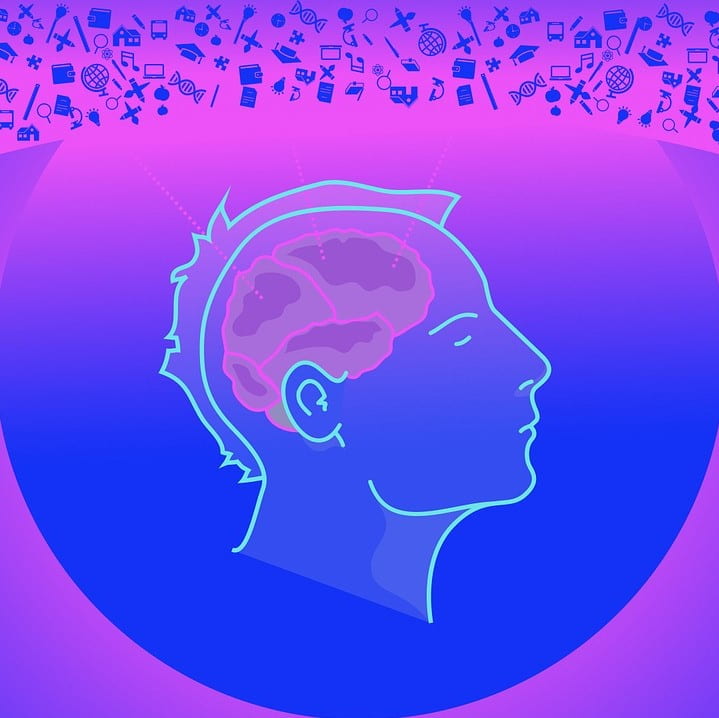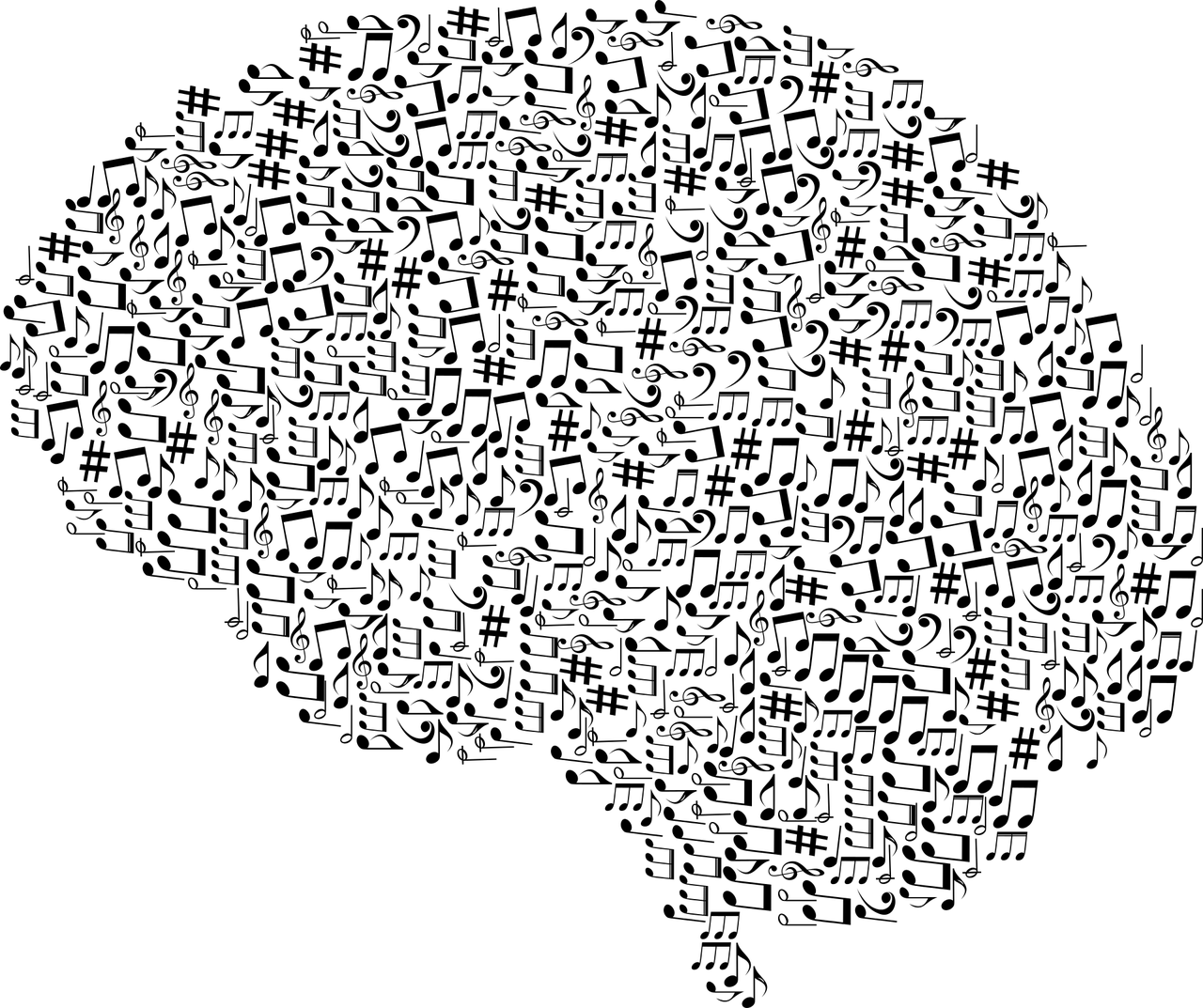![[A person unwinding and rolling up the tangled wire, pulling the tangled wire is in the brain.]](https://blogs.iu.edu/sciu/files/2023/09/mental-6841357_1280.png)
Since the “Decade of the Brain,” neuroscientists and clinical psychologists have been particularly interested in understanding how the brain contributes to psychopathology (commonly referred to as mental illness or mental disorder). However, despite all the resources poured into pursuing questions along these lines, there is little overlap in research findings between studies; it remains difficult to effectively translate neuroscience research into clinical practice, arguably the ultimate goal in studying the brain basis of psychopathology.
Tag: brain
People get “brain drain” when smartphones merely exist in room
![[A person typing on the laptop with one hand while tapping the smartphone with the other hand.]](https://blogs.iu.edu/sciu/files/2023/05/Picture1.png)
Have you – at least for a moment – ever imagined throwing your smartphone out the window, especially when you are trying to focus on your work? Now you might have a justification for your impulse. Behavioral scientists recently found that if your smartphone is merely present in your room, and even if you are not consciously thinking of it, you may still be distracted…
Heart rate variability: What it is and how it relates to mental health
![[Two red heartbeat waves extend from a black-and-white outline of a brain.]](https://blogs.iu.edu/sciu/files/2022/12/sciu_hrv_mainimage.png)
A healthy heart is not a metronome. Even though most of us can follow our heartbeat with ease, in between each heartbeat is a period of time that varies in duration from one beat to the next. This difference in time between any consecutive heartbeat is known as heart rate variability (HRV), and researchers are increasingly using it as a tool to understand mental health…
Potluck of neuroscience: Meet microglia, your brain’s National Guard
![[An illustration of a microglia.]](https://blogs.iu.edu/sciu/files/2021/02/Microglia-Warrior2.png)
One of the first things you’ll learn about if you start studying the brain is that it is made of cells called neurons. While neuroscientists have a decent understanding about how neurons work, it turns out that at least half of the brain is actually made of non-neuronal cells called glia*. Glia, named based on the Greek word for ‘glue,’ were initially thought to be a type of connective tissue in the nervous system, acting just as scaffolding, while the neurons did all the communicating. In the last couple decades, the growing field of neuroimmunology has highlighted the importance of a certain kind of glia: microglia, the brain’s resident immune cells…
A study on grammar and the bilingual brain
![[A cartoon of the brain, with pictures of a heart, a thought bubble, music notes, numbers, a molecule, and words.]](https://blogs.iu.edu/sciu/files/2021/09/brain-5662029_1920.jpg)
We humans have a unique capacity to acquire language, even as adults. However, if you have ever used Duolingo, you might have realized that children are more successful at acquiring languages than adults. This observation is puzzling; since adults are smarter than children, shouldn’t it be the other way around? One set of explanations for this paradox focuses on parsing — that is, applying our knowledge of grammar as sentences unfold incrementally…
Potluck of neuroscience: Meet microglia, your brain’s National Guard
![[An illustration of a microglia.]](https://blogs.iu.edu/sciu/files/2021/02/Microglia-Warrior2.png)
One of the first things you’ll learn about if you start studying the brain is that it is made of cells called neurons. While neuroscientists have a decent understanding about how neurons work, it turns out that at least half of the brain is actually made of non-neuronal cells called glia*. Glia, named based on the Greek word for ‘glue,’ were initially thought to be a type of connective tissue in the nervous system, acting just as scaffolding, while the neurons did all the communicating. In the last couple decades, the growing field of neuroimmunology has highlighted the importance of a certain kind of glia: microglia, the brain’s resident immune cells.
Brain technology in Black Mirror: Technological myths or real possibilities? Part III

In the third part of this blog series, we will finish looking into human consciousness by thinking about what happens to it after death. If you have not seen the episodes, do not worry, spoilers are kept at a minimum! You can read parts 1 and 2 here. San Junipero is a virtual afterlife into… Read more »
Brain technology in Black Mirror: Technological myths or real possibilities? Part II

In the second part of this blog series, we will look at three episodes where proposed technologies involve human consciousness. We will see if these technologies can become real possibilities in the near future. If you have not seen the episodes, do not worry, spoilers are kept at a minimum! You can also read part… Read more »
Brain technology in Black Mirror: Technological myths or real possibilities? Part I

If you happen to watch Black Mirror, it is quite likely that you have been scared by the brain implant technologies depicted in the show. In fact, almost a quarter of this show—at least five episodes of the current 22— illustrate the dangers of brain implants. The horror stories range widely, from transferring someone’s consciousness into… Read more »
What music does to your brain: A neuroscientist’s perspective

Why do we like music? Music is interwoven into almost every aspect of our lives. We hear it at the grocery store and in every single video we watch. We listen to it when we exercise, and we pay boatloads of money to go see our favorite artists in concert. We love all kinds of… Read more »